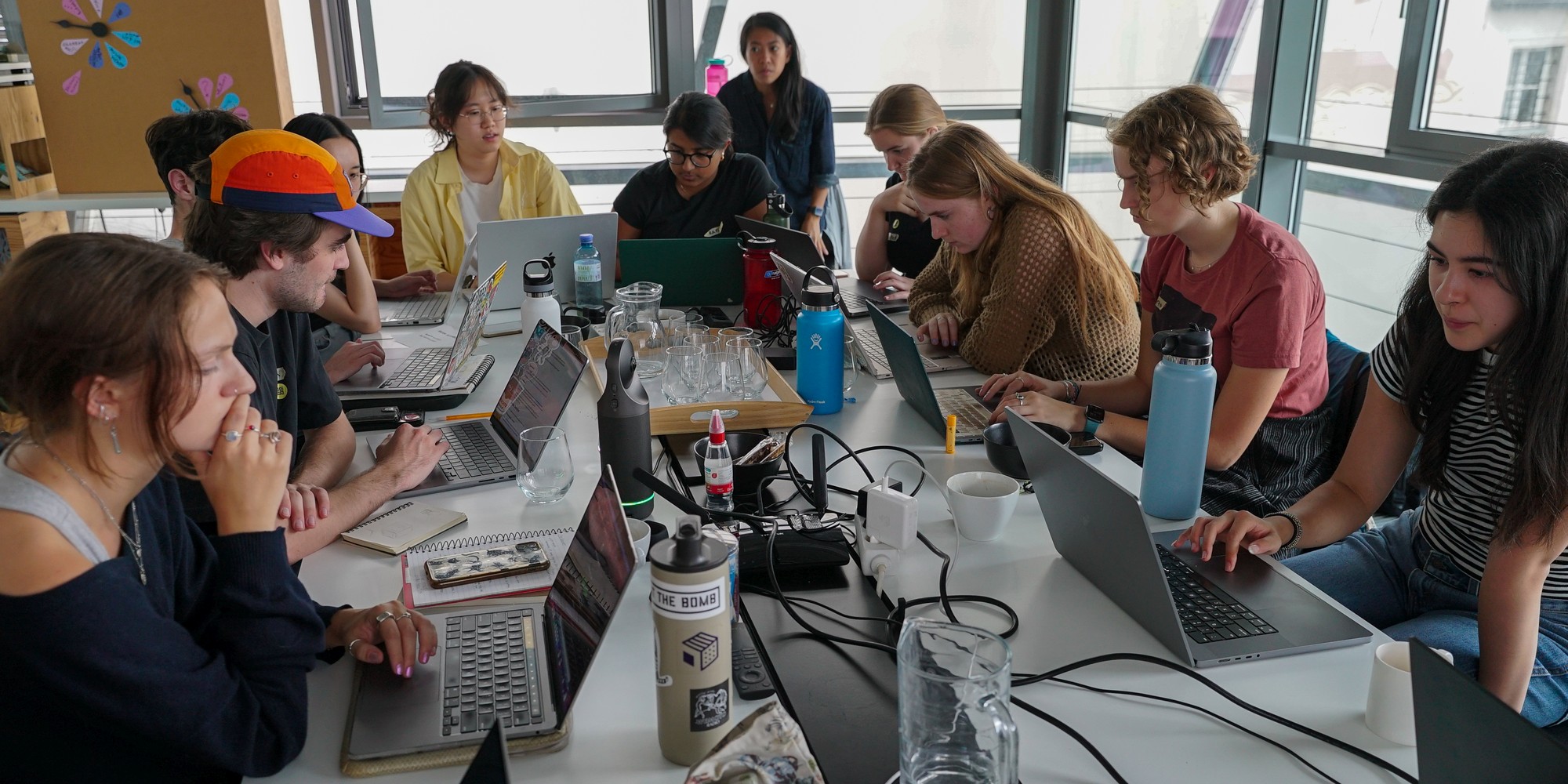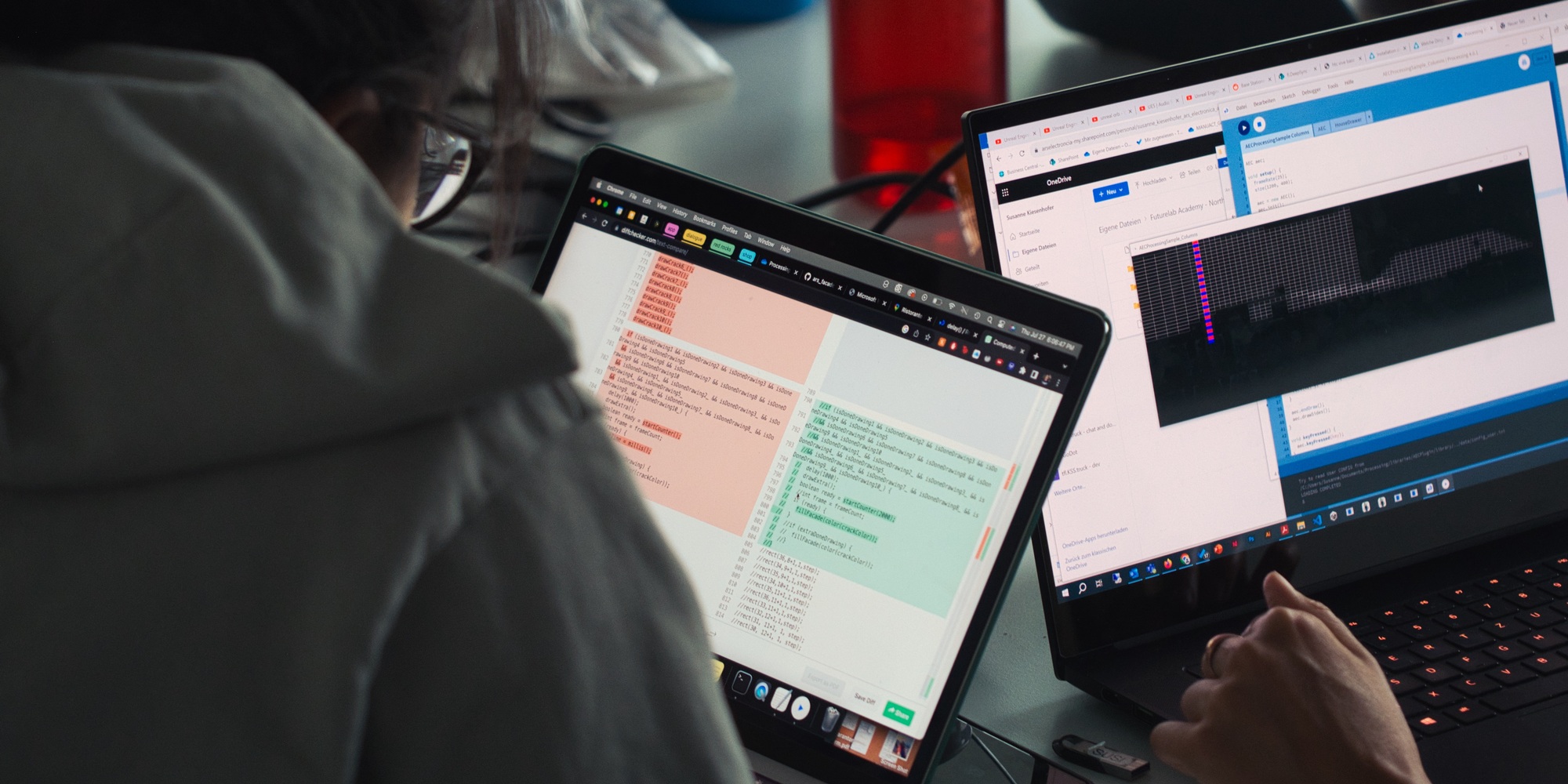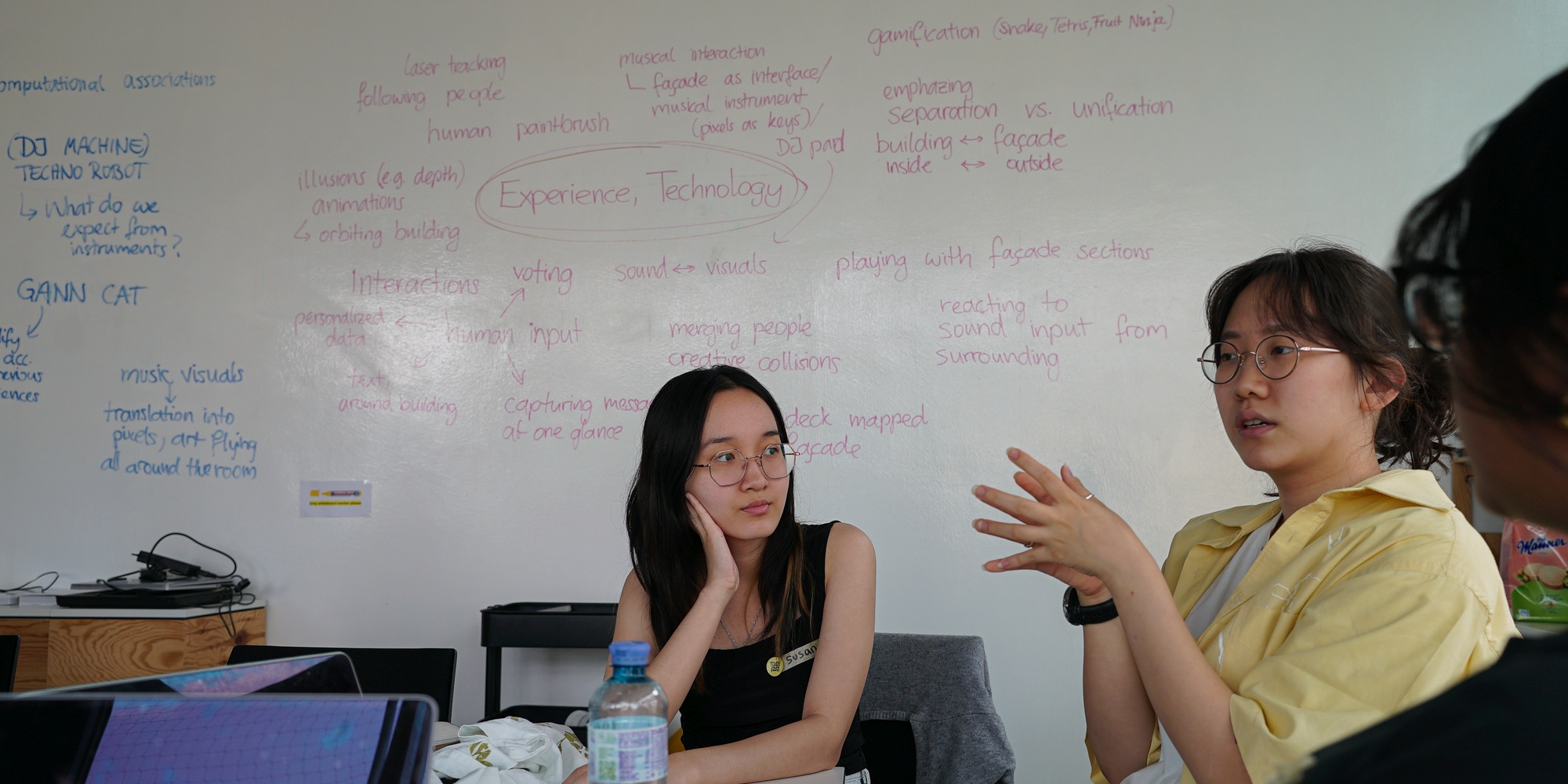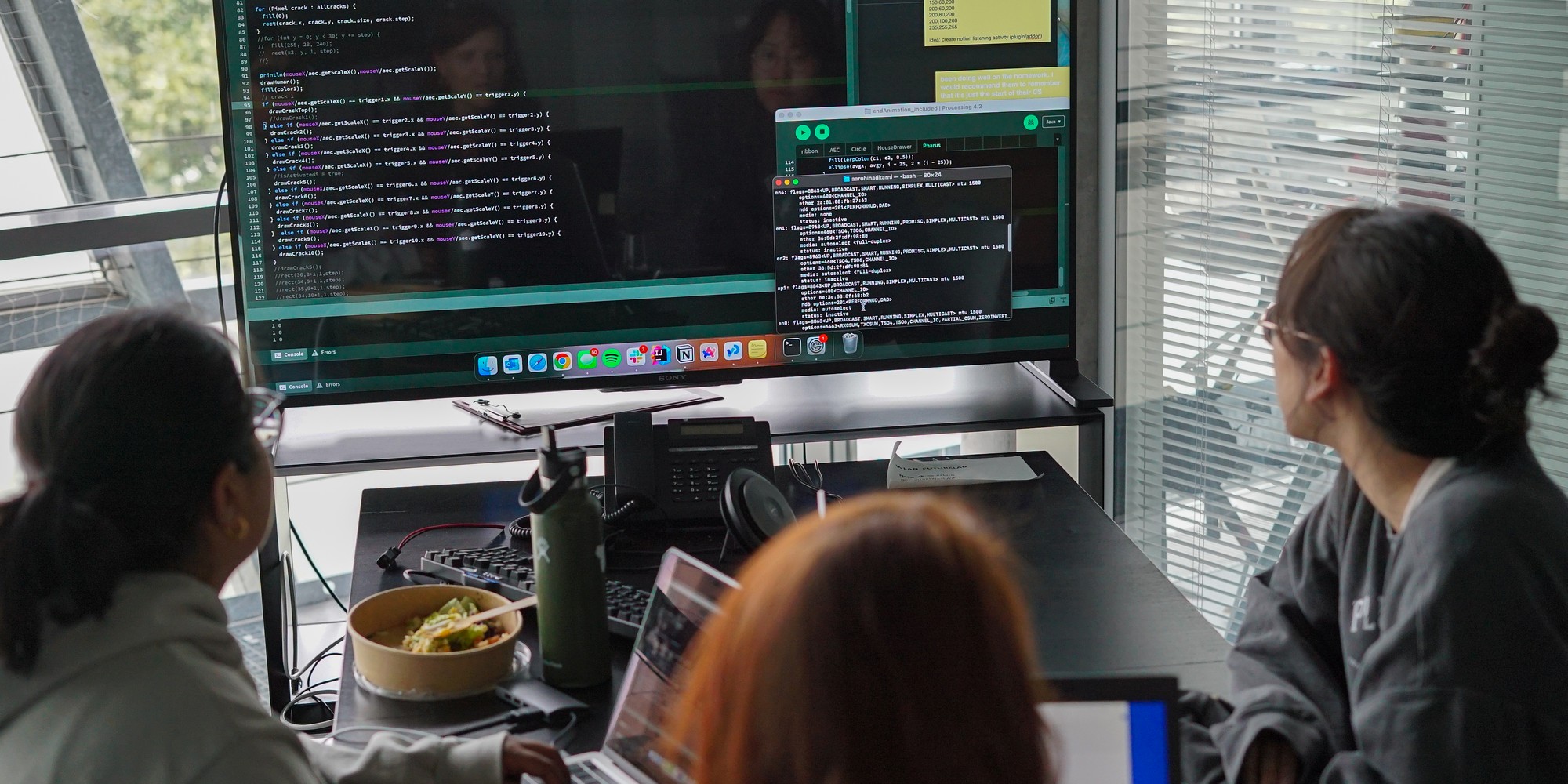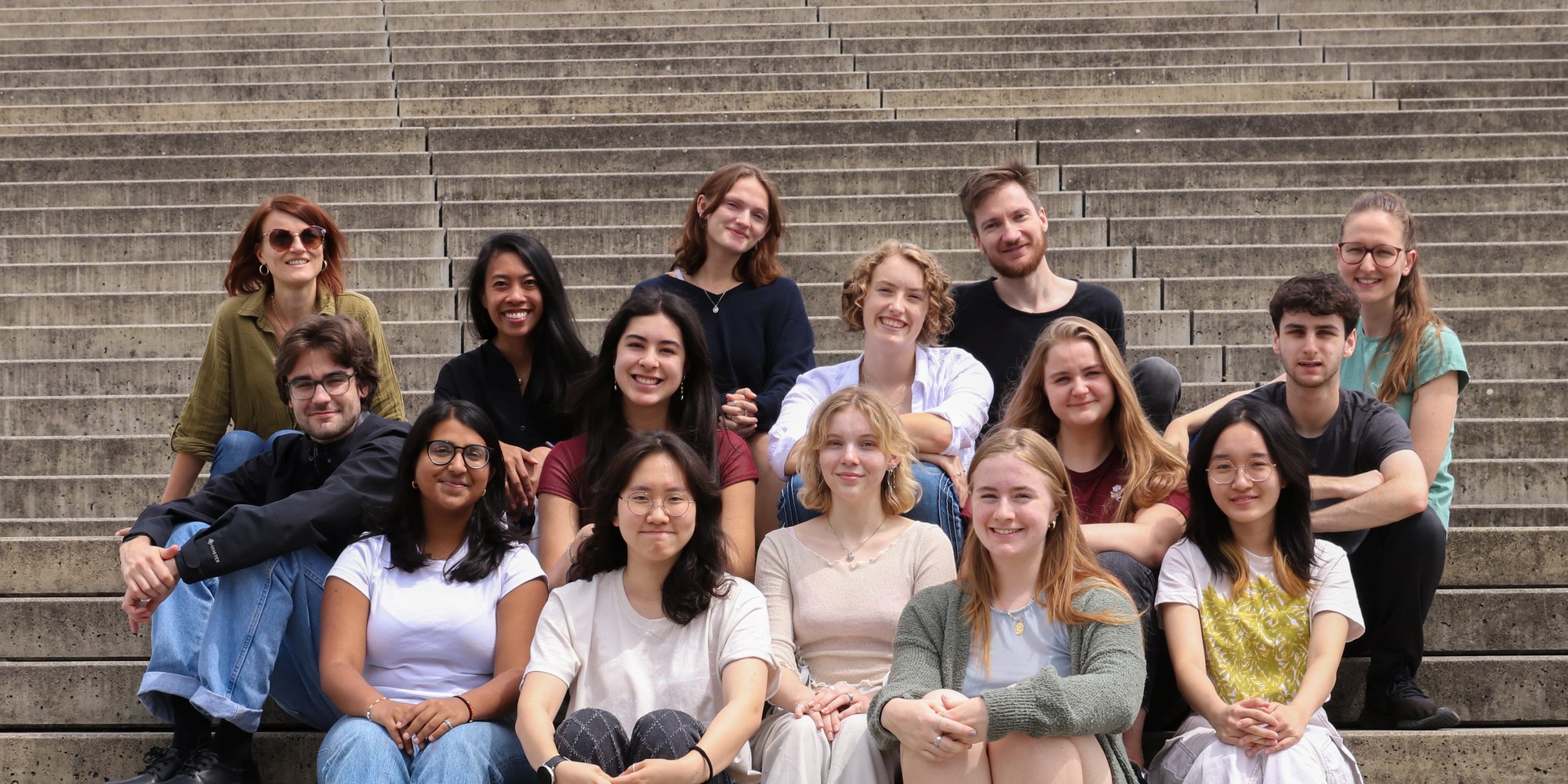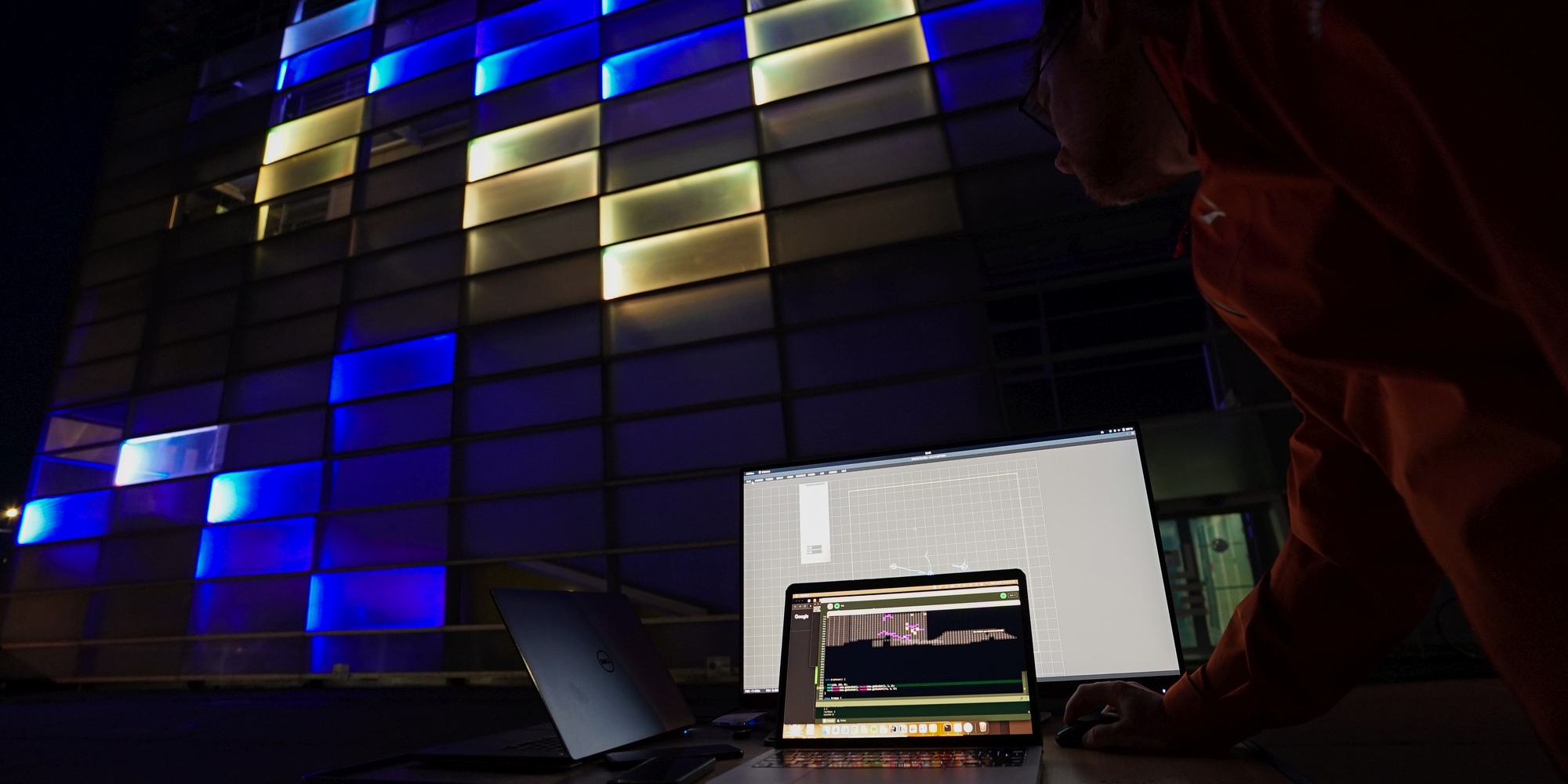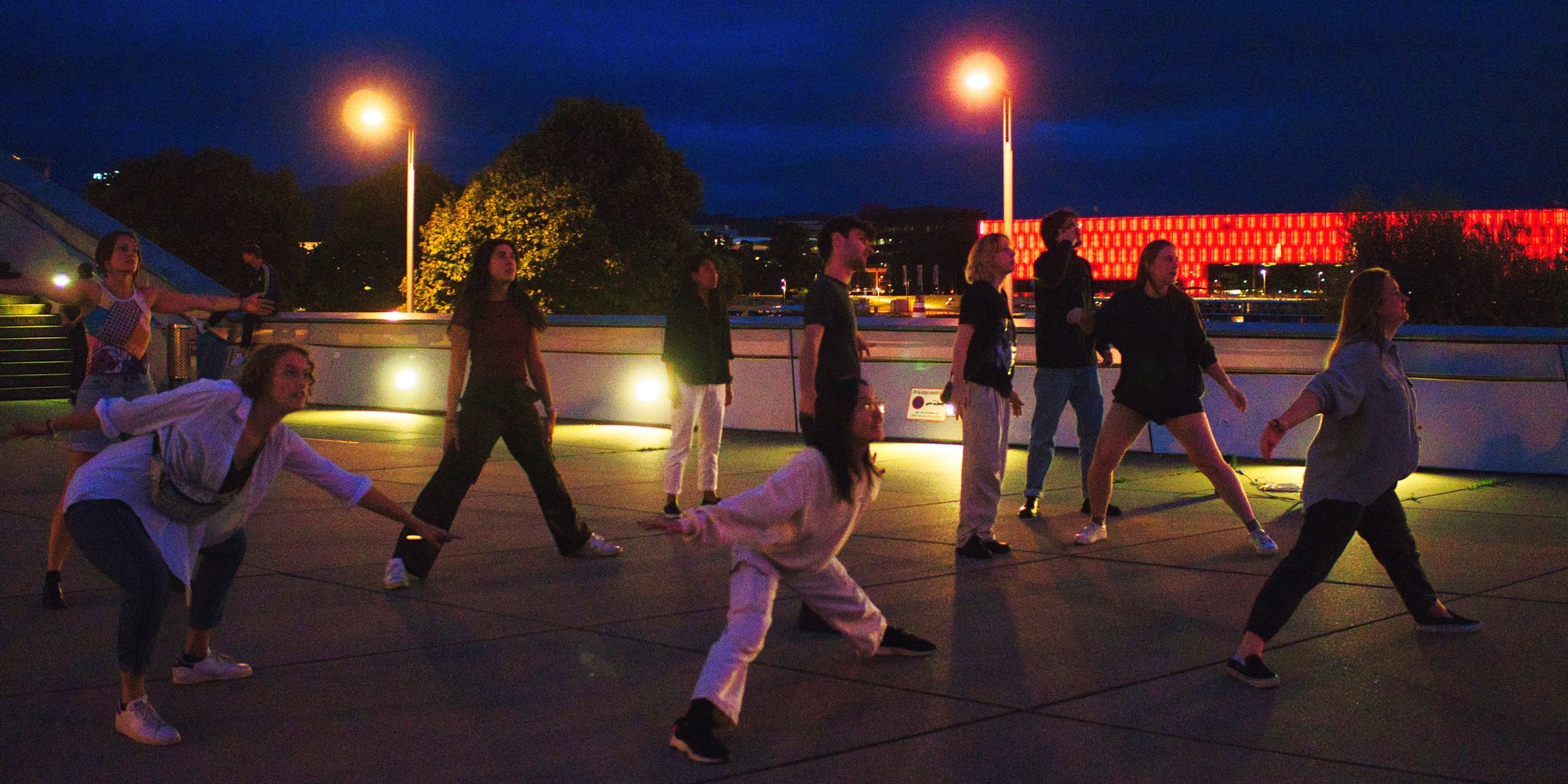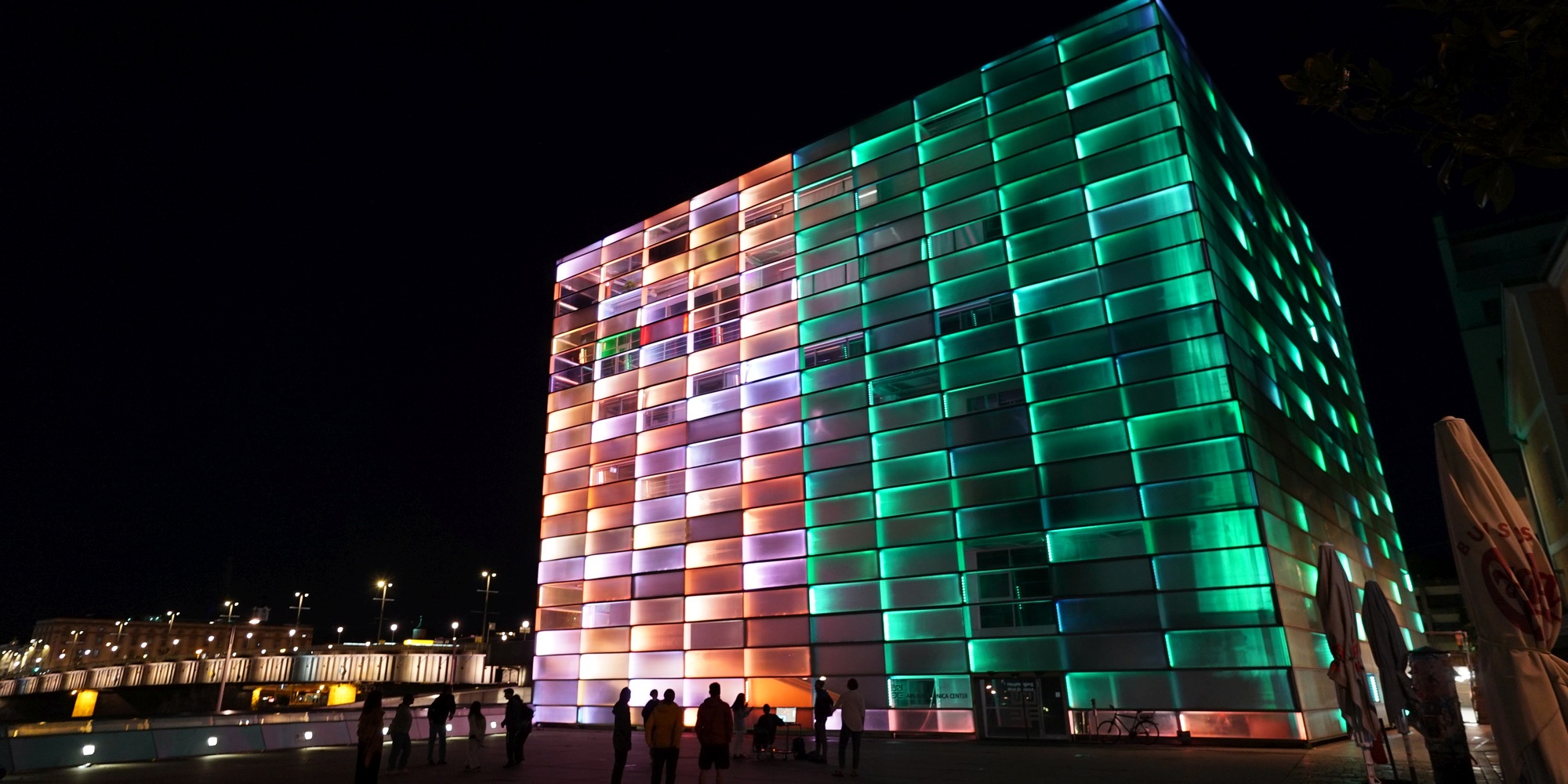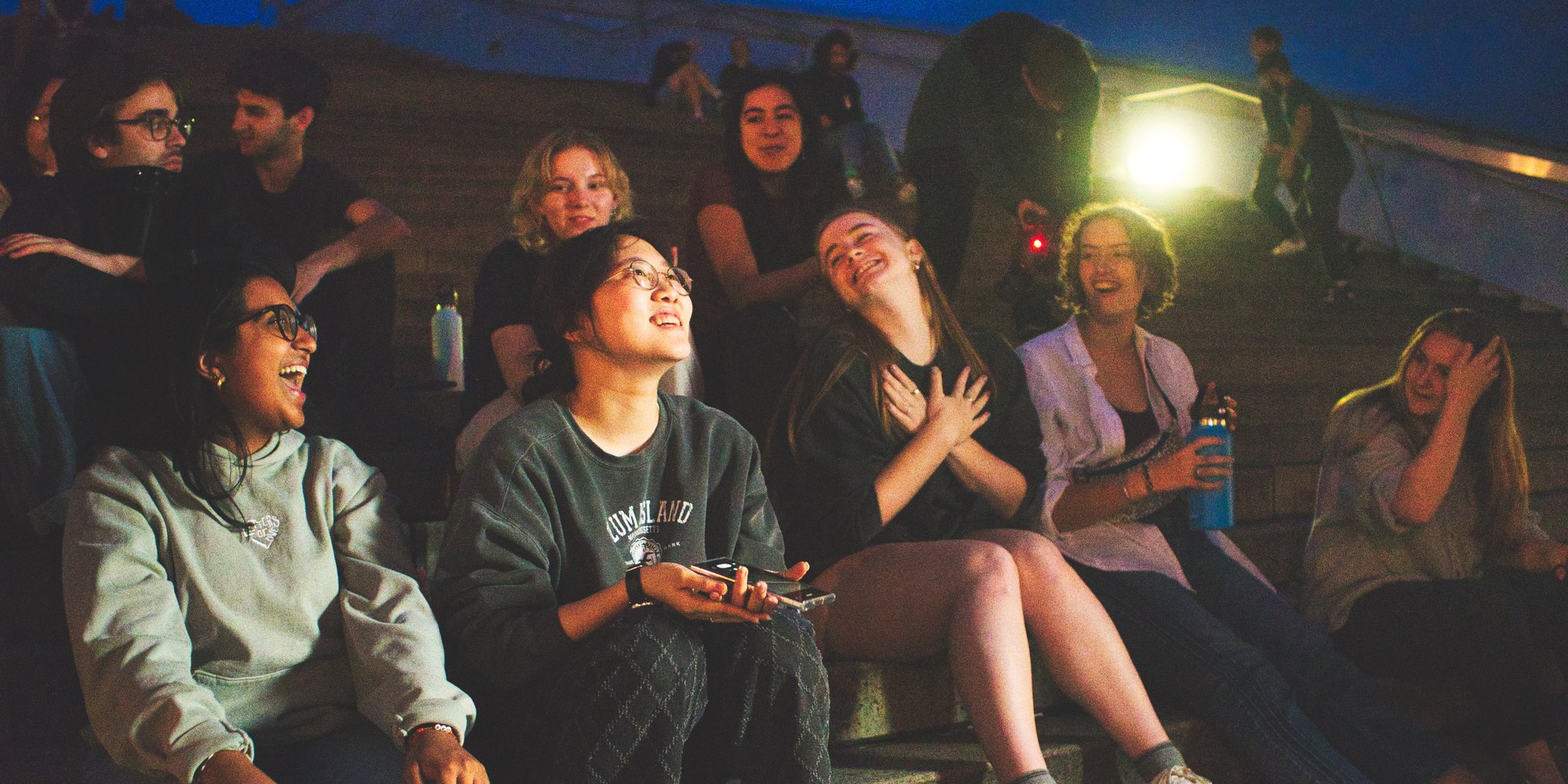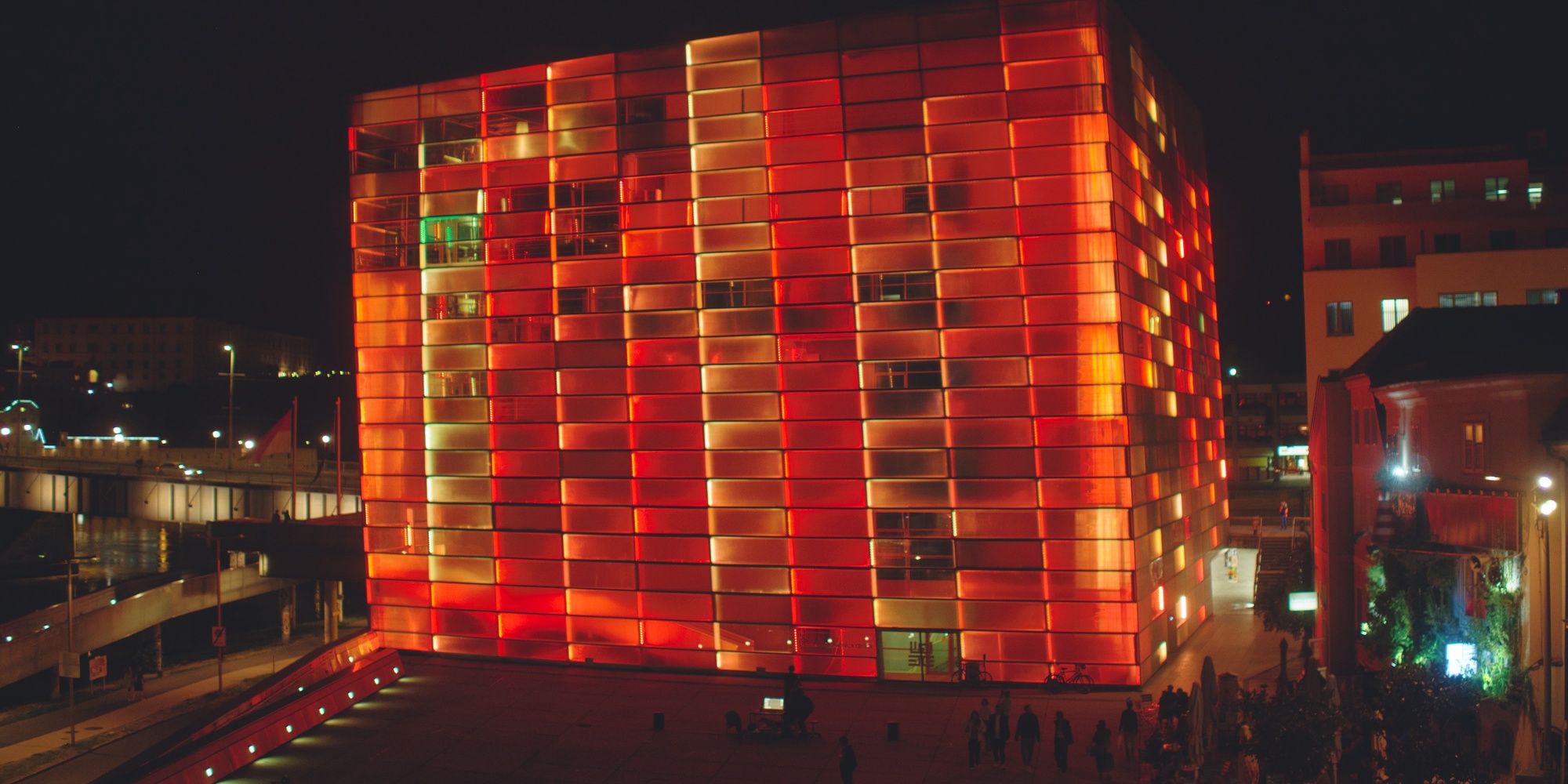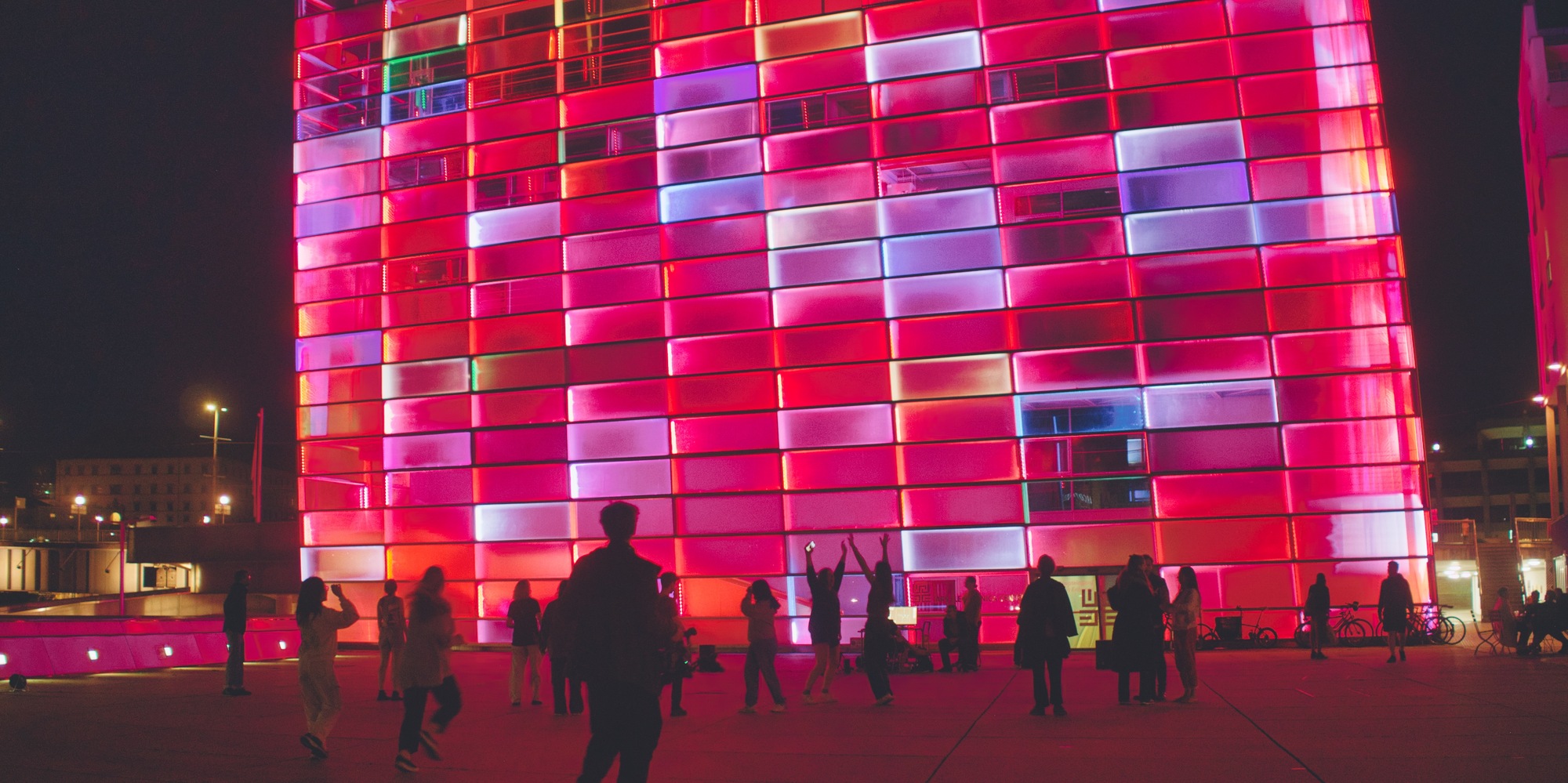In 2023, the Ars Electronica Futurelab hosted an interdisciplinary group from Northeastern University in Boston for the third time. With the help of lab members, the students created art projects for the programmable media façade of the Ars Electronica Center in three intensive days.
In the Ars Electronica Futurelab Academy, we challenge the creativity of students in workshops, seminars, and project-focused mentoring sessions. For the students, the hands-on approach of the Futurelab, paired with the potential and exposure of the Ars Electronica ecosystem, is a unique opportunity to develop their ideas and skills; for us Futurelab researchers, the dialogue and influx of fresh ideas is more than welcome.
From serious topics to playful interaction
The yearly visit of a new set of students from Boston’s Northeastern University was ready to transition to tradition in 2023, with the third installment of the program. In four project groups, the students created experiences that playfully addressed serious topics such as climate change and democratic processes or reflected on the role and perception of the building itself. Some projects included physical interaction on the Ars Electronica main deck (a popular inner-city public space), while others were purely time-based artworks.
In addition to facilitating the project work, Futurelab researchers also kickstarted discourse and ideation with inspiration talks. All of this led up to the final evening, when the projects could be experienced by anyone near the Ars Electronica Center.
The projects, with descriptions from their authors:
VOID
Jason Hoopes, Matthew Aferzon
VOID is a digital art exhibition that explores the visual impact of negative space on the facade of Ars Electronica Center. For years, the facade has been home to hundreds of custom light-show animations, illuminating the city of Linz and enthralling its residents. To some, however, this display has taken on a life of its own, almost existing as a separate entity from the museum that it surrounds. As a result, the purpose of VOID is to re-emphasize the connection between the two. As the facade becomes engulfed in light, windows of negative space emerge, expand, and move around the structure, alluding to the space within its walls. From a distance, the illusion takes on an entirely new form. As the windows traverse the facade and darken parts of the display, the building itself appears to change shape, sometimes in ways that would be structurally impossible.
Fractured
Aarohi Nadkarni, Christine Cho, Susan Dinh
Fractured examines the destruction of the seemingly permanent through anthropogenic causes. When a person steps on a trigger point, cracks form and spread on the building façade. Taking inspiration from cracks in rocks and ancient architecture, this interaction demonstrates how humanity can intentionally or unintentionally destroy. Ultimately, the cracks take over the entire Ars Electronica building, the color scheme is inverted, and lightning appears, which symbolizes conflict and revelation.
Color Quandary
Ellie Williams, Aspen Tabar, Marta Hill
Color Quandary is an interactive color competition that engages viewers to vote with their feet for their favorite colors, creating a playful atmosphere on the main deck of the Ars Electronica Center.
At the start of each competition, the Ars Electronica facade divides into two colors. Players in the plaza are tracked using motion detection software and move towards the side with their favorite color to weigh in on their preference. The winning color overtakes the entire building. A round of Color Quandary includes seven individual games: four quarterfinal games, two semifinal games and one final game. After a winner is crowned, the entire facade transforms into a display indicative of the overall standings of each color.
Color Quandary is inspired by “this or that” games in which users are asked to make a quick decision about which option they prefer. Though the idea was simplified to translate better on the Ars Electronica Center facade, the heart of the idea is the same. Color Quandary invites passersby to use their bodies to control the facade with an accessible, easy to understand and visually interesting game.
Climate Countdown
Liang Jimenez, Alexa VanSuch, Reed Reed
Inspired by our rapidly changing climate, Climate Countdown guides the viewer through a dynamic audiovisual experience of extreme weather events. Our intent is to visually speed up the process of climate change and showcase how these weather events are the results of the climate disaster. By including seemingly normal events like rain, heat, sun, and cloudy days and later shifting the scenes to include more extreme visuals, the viewers may be shocked by what they see. However, this shock is required for some people to fully realize how little time we have left to save our world. Then, the Climate Clock is displayed to show how much time is left until the effects of climate change are irreversible. The Climate Countdown facade of the Ars Electronica Center is meant to amplify the message of the Climate Clock project by activists Gan Golan, Andrew Boyd, artist Katie Payton Hofstadter, and Adrian Carpenter.
Color Contest
Aspen Tabar
Color Contest is an animation where four colors – Red, Blue, Green, and Yellow – have an intense contest for dominance over the shared space of the facade. Each color starts from its own corner and gradually expands towards the center. Once all colors have reached the center, they begin to interact! Some colors will grow, while others will shrink. Visitors can vote and cheer for their favorite as they watch the colors compete over space. At the end, the winning color takes over the entire Ars Electronica building in a shimmery animation.
Credits
Ars Electronica Futurelab: Matthew Gardiner, Peter Holzkorn, Otto Naderer, Anna Weiss, Maria Pfeifer, Susanne Kiesenhofer
Thanks to Kate Terrado, Kara Braciale, Mina Fletcher from Northeastern University

